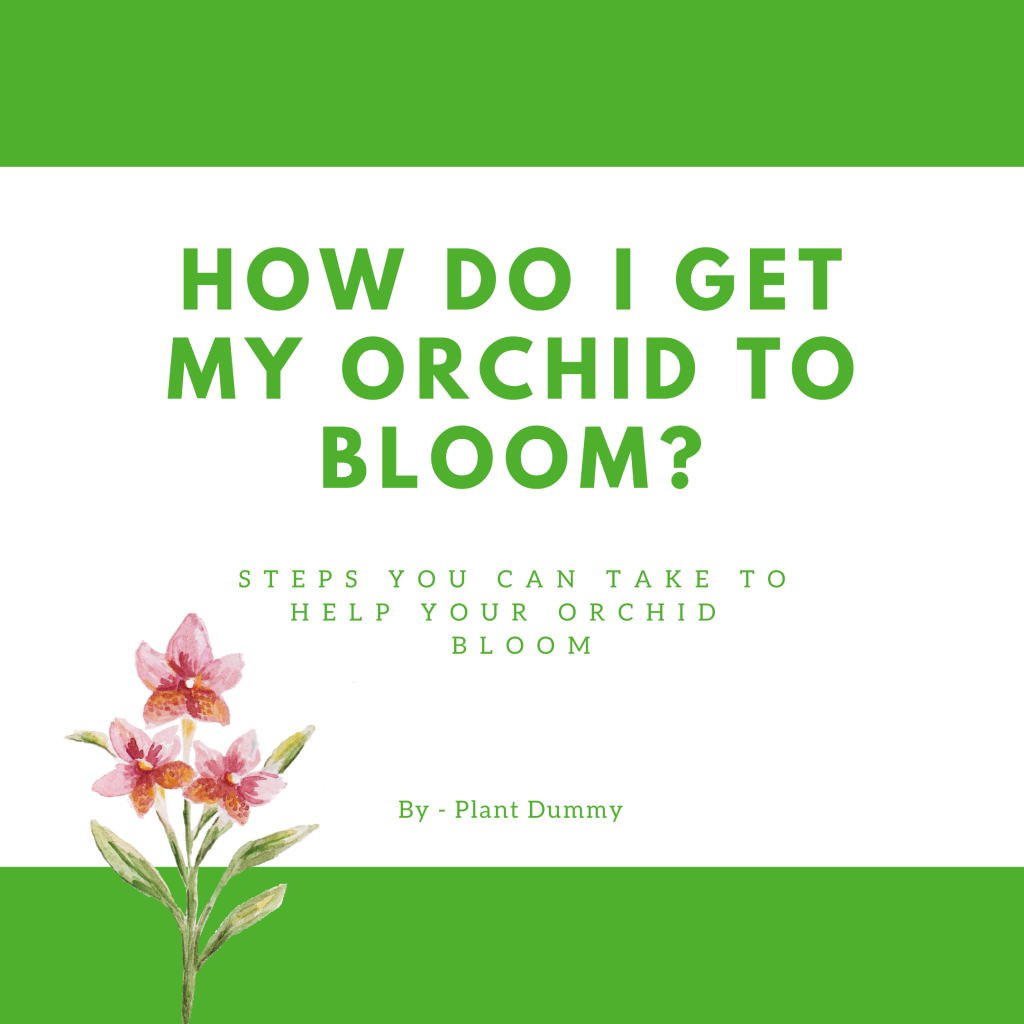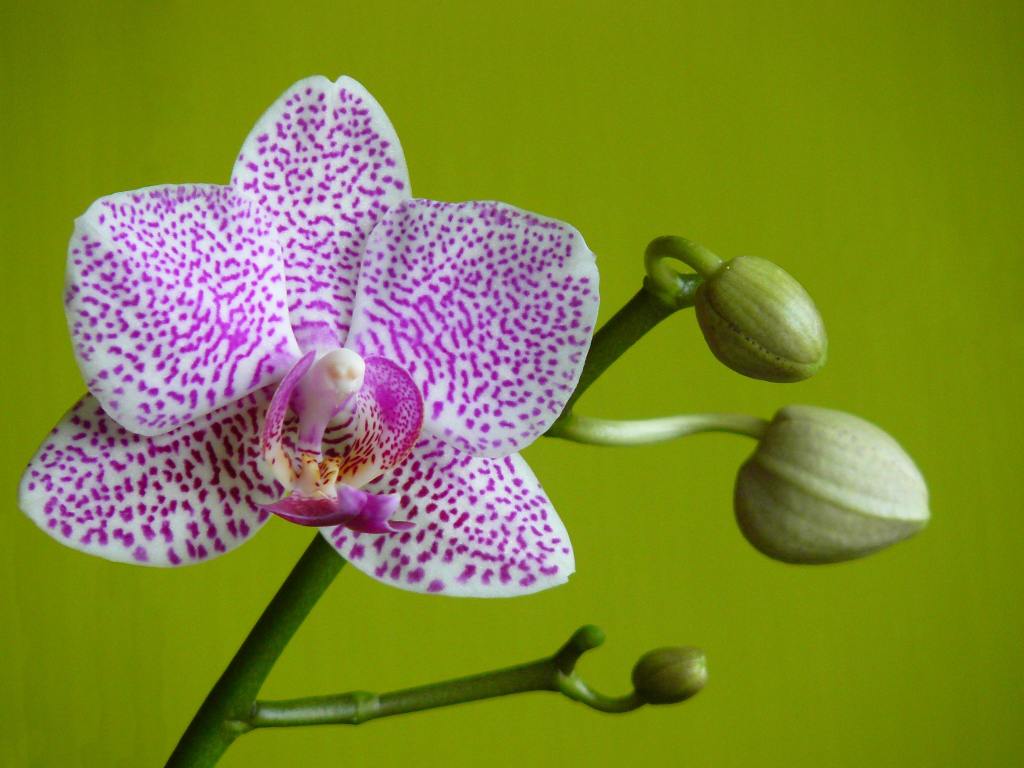
You know how frustrating it is when you cant seem to get your orchid to bloom? Or when you think that you are not really sure what you are doing wrong? I have been there, felt that way many of times. It’s not fun, so I wanted to tell you you what works for me.
There aren’t many things that feel as good as when you see your orchid opening up and you get the beautiful bloom that happens about once a year for about six to ten weeks. So I hope that what I have to say can help you at least a little bit in some way.

Have you ever had issues getting your moth orchid to bloom? Or perhaps you are asking yourself if there is a way to get my orchid to potentially bloom a little more often. Now my opinion is that there is a bit of knowledge and for the plants sake, luck to be involved to have longer and potentially more frequent blooms.
If you want to entice your moth orchid to bloom, or bloom more often you are going to have to create an environment that allows for it. This means having your orchid in an optimal setting in order to maximize the potential for blooming.
Picking the right pot for your orchid
Picking the right pot is a very important part of having an orchid. Some people choose to not have a pot, and root them on pieces of wood. However for most people, you would be picking a nice pot.
The best pot for an orchid is mainly going to consist of it being able to get rid of excess water. Standing water for the orchid root system is really bad. It can lead to root rot, which can be hard to notice until later stages if the majority of roots are under sight lines. If you are looking for orchid specific containers they will normally have many holes, sometimes even on the sides. The holes allow for that drainage as well as air flow.
You can also use the holes in the sides to do root checkups to make sure they aren’t experiencing any root rot.
I personally really like a glazed pot that have designs for the holes. A shiny earthy look is something that really pops with the bloom of an orchid for me. Another type I like is a terracotta type holder, but you do have to make sure that it drains enough because a lot of regular terracotta doesn’t have holes in the sides from what I have seen.
How to choose good lighting for your orchid
A good consistent spot is going to be crucial for a moth orchid to be happy, and healthy. Moth orchids prefer indirect light as opposed to direct light. Direct light can be too much for the moth orchid and create burns on the leaves.

Not enough light can also prevent the orchid from blooming, or slow blooming down. So you will want to find a good balance and adjust slightly here and there to get it perfect. Light green leaves will be a decent key to knowing if your plant is happy or not. Yellowing leaves in spots is a sign that it may be getting burned.
What Humidity and temperature does my orchid need?
When you wake up it’s cold outside, your house is a little bit colder than normal. Do ever just want to stay wrapped up in your blanket? Well that can be similar to how your orchid may feel when exposed to the wrong humidity and temperature.
The winter generally has less humidity because it is cold
For the temperature you will want to keep the area around 70 during the day and around 60 at night (55 is about as low as they will want to go). Too cold of temperatures, and constant temperatures over 90 can definitely stress the orchid out. Drastic changes in the temperature beyond like 20 degrees can also stress the plant out as well. It would not really know what is going on or how to react.
As far as humidity goes, orchids like it to be from 40%-70% humidity. This gives you some options, I honestly prefer orchids to be where there is no question of humidity, and that would be the bathroom for me. Particularly because I have a skylight that gives them plenty of indirect sunlight. If you don’t have room in your bathroom, or just don’t want them inside your bathroom, you have some options.
Tip: Air circulation is good for your plants and you. It gives you both fresh air, and gets rid of the old air. Just make sure it isn’t hurricane force wind, because that won’t be great.
One option may be a good option for you is to get a clay pot that has a humidity tray built. Or if you don’t want to transplant your orchid, you can get this humidity tray. It’s subtle, looks sleek and would go with most pots, and it’s pretty affordable.
Another option is a humidifier, this is for more of setting in rooms where the humidity would generally be lower but you want your plants there. This can be good if you have some plants that like higher humidity, not just orchids. These are also nice if your nose tends to get dry during the winter when you sleep, but that’s really just a bonus.
Click here to see this humidifier out on Amazon.
I may get commissions for purchases made through links in this post.
Watering your orchid
Another crucial part of having a healthy orchid is making sure it is watered correctly. I like misting the roots. Using a mister for watering the roots allows for you to spray the roots with less risk on having water spray into the crown. At least this is something that works for us.
You also really want to avoid getting standing water on the leaves, as well as avoiding water getting into the crown (where the leaves kind of create a cup looking area). Water standing on leaves can lead to damage, or infection on the plant.
If you are interested in a mister you can check this one out on Amazon which comes in different colors. These are low cost but tend to last if you use care. They look a lot better than a plastic spray bottle in my opinion. The nozzle is elongated allowing for you to get the mist where you want it.
Click here to buy the mister on Amazon
I may get commissions for purchases made through links in this post.
Tip: Overwatering is more dangerous to your orchid than underwatering. I think of it like adding salt to a dish. You can always add more salt, but if you add too much salt at the beginning the dish is ruined.
Choosing proper soil and fertilizer for your orchid
Choices, choices, choices. There are almost too many choices when it comes to choosing a medium for an orchid. You will want to avoid just random potting soil. Various brands produce specific orchid potting mix.
Usually these mixes contain some variance of bark size, which will allow for easy draining of the water. It might also contain some moss or pearlite as well.
At my house, we have I think 7 orchids off the top of my head. Currently we are using the “Miracle-Gro; Orchid Potting Mix Course Blend”. We haven’t noticed any issues as far as stagnant water or root rot with it. They also give a pretty helpful reminder on the back of the bag. It is also really affordable.
As far as fertilizer or “plant food” my girlfriend and I have been using “Miracle-Gro Orchid Plant Food Spikes” and I haven’t noticed any negative effects. I really like it because like the potting mix, it reminds you when you should be using it. Both of these are pretty affordable.
If you want an Orchid potting mix, and fertilizer without having to make it yourself. Check the “Plant Care Bundle” out on Amazon. Look at some reviews and see if it’s for you. Like I said, this is what we are currently using, and I can’t complain yet.
Click here to see the “Plant Care Bundle” on Amazon
I may get commissions for purchases made through links in this post.
I really hope that this article can help you become more confident on your green thumb abilities. Most of this is trial and error. Figuring out how your plants react to things and reading the situation. You will be able to figure out what your plant needs in no time.
If you have any questions or if I got something wrong please let me know.
As always, thank you for reading
-Plant Dummy
References and Citations:
Light, the key to successful blooming. (2016, March 27). Retrieved February 18, 2021, from https://www.aos.org/orchids/additional-resources/light-the-key-to-successful-blooming.aspx
Old Farmer’s Almanac. (n.d.). Orchids. Retrieved February 18, 2021, from https://www.almanac.com/plant/orchids






